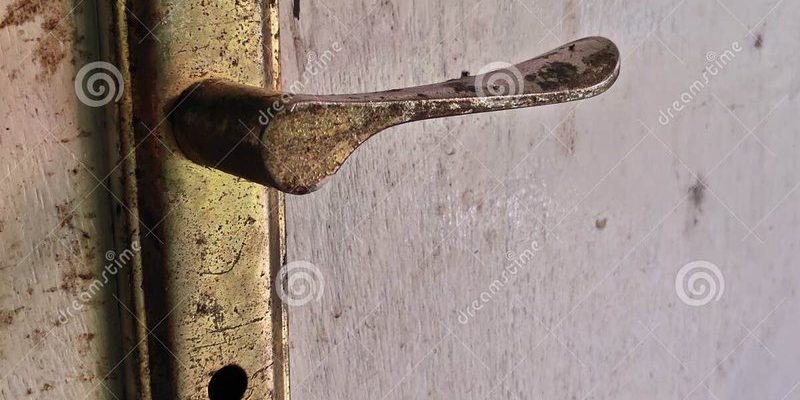
Cleaning door hardware can sometimes feel like preparing a fancy meal, only to realize you forgot the key ingredient. You expect that fresh, gleaming look after cleaning, but instead, you might have cloudy spots or a matte finish that just doesn’t shine. Let’s dig into this mystery and figure out why your door hardware finishes can dull after cleaning, and how to avoid it.
Understanding Different Finishes
Before we jump into cleaning, it’s crucial to understand the different types of finishes on door hardware. Door handles, locks, and hinges can be coated in various materials, each with its specific look and maintenance needs.
Common finishes include:
- Chrome: Highly reflective and shiny.
- Brushed Nickel: Has a softer, muted look.
- Oil-rubbed Bronze: Dark with a rich patina.
- Stainless Steel: Often used for its durability and modern appearance.
Each of these finishes can react differently to cleaning agents, moisture, and even the cloth you use. For instance, chrome can show water spots, while brushed nickel can appear streaky. Knowing what finish you have helps you choose the right cleaning method.
Common Cleaning Mistakes That Dull Hardware
Now that you know the finishes, let’s talk about what often happens during cleaning that leaves your hardware looking lackluster. Sometimes, it’s not just about the cleaning product you use; it can also be the technique.
1. Using Harsh Chemicals: Products with ammonia or bleach can strip protective finishes, leading to a dull appearance. *Always read labels* and choose mild, non-abrasive cleaners.
2. Using the Wrong Cloth: Scrubbing too hard with a rough cloth can scratch the finish. Instead, opt for a microfiber cloth, which is gentle yet effective.
3. Not Rinsing Well: If you don’t rinse away all the cleaner, residue can build up. This residue often looks dull or cloudy, especially on shiny surfaces.
You might be wondering what a better approach looks like. Let’s break down the steps for effective cleaning.
How to Properly Clean Door Hardware
Here’s the thing: cleaning your door hardware doesn’t have to be complicated. With the right materials, you can restore that shine effortlessly. Follow these steps for best results:
1. Gather Your Supplies:
– Mild soap (like dish soap)
– Warm water
– A soft microfiber cloth
– A dry cloth
2. Mix the Cleaner: Combine a few drops of mild soap with warm water. It should never be stronger than what you’d use to wash your hands.
3. Wipe Down the Hardware: Use your damp cloth to gently wipe the hardware. Be sure to get into the crevices, but don’t apply too much pressure.
4. Rinse and Dry: Wipe off with a clean, damp cloth to remove soap. Follow with a dry cloth to prevent water spots.
By sticking to this method, you can clean without compromising the finish.
Why Protective Coatings Matter
Many door hardware pieces come with a protective coating that helps prevent tarnishing and scratches. This coating is what keeps that shiny look intact. Over time, even the gentlest cleaning can wear this coating down.
If you notice that your hardware looks dull after cleaning, it could be that this protective layer has thinned. Here’s how you can combat this:
– Regular Maintenance: Just like you’d regularly clean your windows, keeping your door hardware maintained can prevent buildup and dullness.
– Use Protective Wax: In some cases, applying a light coat of wax can help protect the finish.
Maintaining that protective layer is key to avoiding the dull look after cleaning.
The Role of Environmental Factors
You might not think about it, but your environment plays a huge role in how your door hardware looks. Things like humidity, temperature, and even the air quality can impact the finish.
– Humidity: Excess moisture can lead to tarnishing, especially on metal finishes. Consider using a dehumidifier if the air is consistently damp.
– Temperature Changes: Rapid changes can cause materials to contract and expand, which can wear down finishes over time.
– Pollutants: Dust, dirt, and smoke can settle on hardware, dulling the shine. Regularly dusting your hardware can make a big difference.
Taking care to control these factors can help maintain that fresh appearance.
When to Consider Replacement
Sometimes, despite your best efforts, your door hardware might look permanently dull. If you’ve tried cleaning, waxing, and maintaining, it might be time to consider replacing it.
Signs that replacement could be beneficial include:
- Visible corrosion or peeling finishes.
- Persistent discoloration that won’t come off.
- Mechanical failures in locking mechanisms.
Replacing hardware can feel daunting, but sometimes it’s the best way to restore the aesthetic of your space.
Seeing dull door hardware after cleaning can be a real letdown. However, understanding the types of finishes, avoiding common mistakes, and using the right cleaning techniques can help you keep things looking sharp. Remember, your environment matters, too. By taking a few extra steps, you can maintain that shine and even protect your hardware from future dullness.
Keep your door hardware looking its best with regular maintenance, and don’t hesitate to upgrade if needed! With a little care, those door handles can keep turning heads instead of looking tired.
